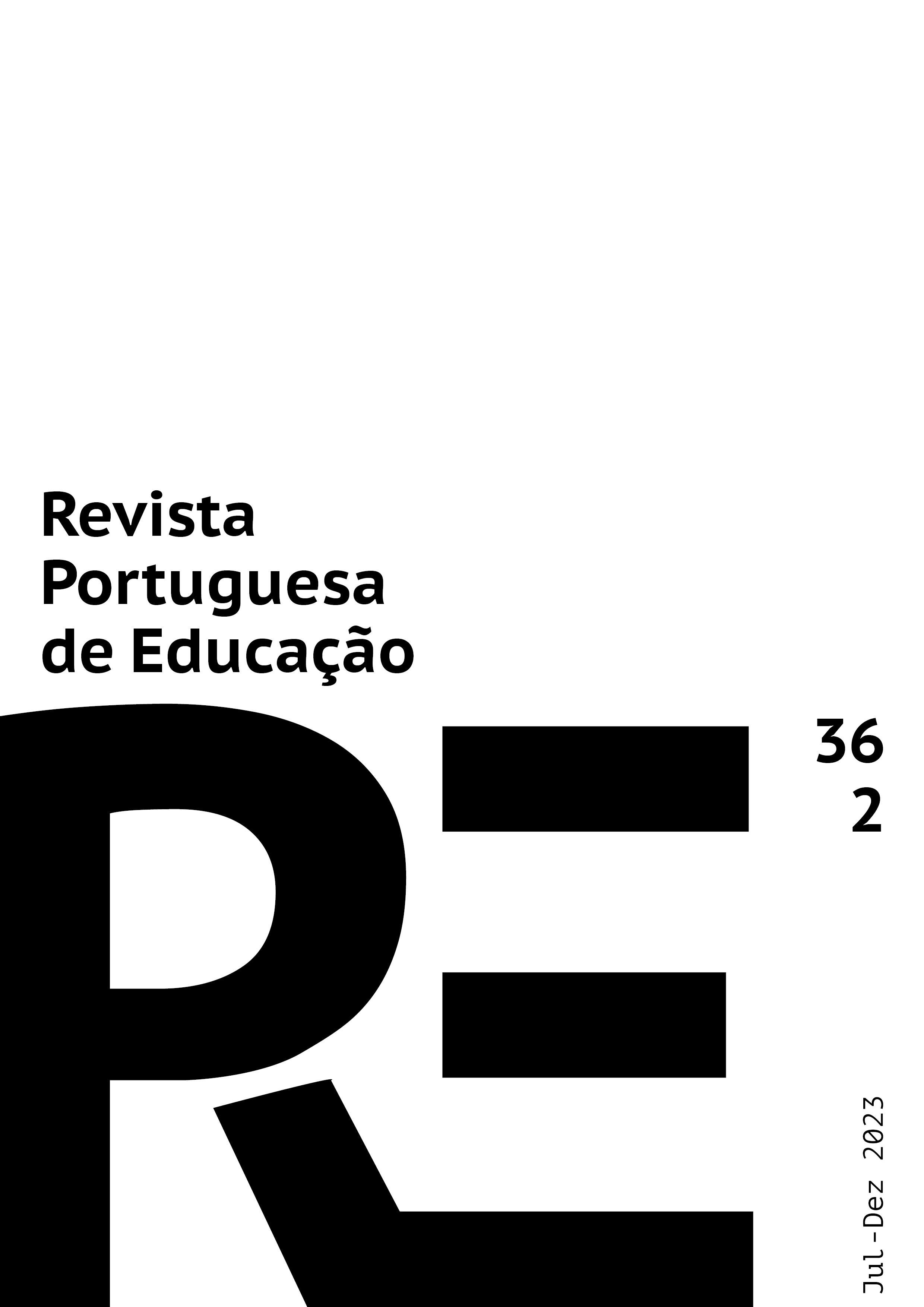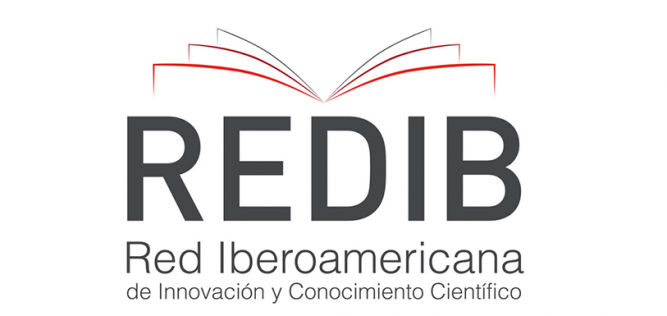Evidencia de validez de la escala de motivación laboral docente
DOI:
https://doi.org/10.21814/rpe.25592Palabras clave:
Docencia, Teoría de la autodeterminación, Motivación docente, Análisis factorial confirmatorioResumen
Este estudio tuvo como objetivo estimar los indicadores de validez basados en la estructura interna y la precisión de la Escala de Motivación Laboral Docente, mediante un Análisis Factorial Confirmatorio (AFC). Participaron del estudio 452 docentes de diferentes etapas, instituciones educativas y regiones de Brasil. Los resultados del AFC indicaron la presencia de las cuatro dimensiones motivacionales, según la literatura científica, con índices de consistencia interna considerados aceptables y buenos índices de ajuste del instrumento. Se encontraron correlaciones positivas y negativas entre los factores, todas ellas significativas. Por último, los profesores se mostraron más motivados de forma autónoma. Los resultados muestran importantes contribuciones al área psicoeducativa, con indicadores psicométricos del instrumento bien desarrollados para la evaluación del constructo motivacional relacionado con la labor docente.
Descargas
Citas
Abós, A., Sevil, J., Martín-Albo, J., Aibar, A., & García-González, L. (2018). Validation Evidence of the Motivation for Teaching Scale in Secondary Education. The Spanish Journal of Psychology, 21(9), 1-12. https://doi.org/10.1017/sjp.2018.11
Cheon, S.H., Reeve, J., & Vansteenkiste, M. (2020). When teachers learn how to provide classroom structure in an autonomy-supportive way: Benefits to teachers and their students. Teaching and Teacher Education, 90, e103004. https://doi.org/10.1016/j.tate.2019.103004
Cohen, J. (1988). Statistical power analysis for the behavioral sciences. Erlbaum.
Colares, A. C. V., Castro, M. C. C. S., Barbosa Neto, J. E., & Cunha, J. V. A. (2019). Teacher motivation in stricto sensu postgraduation: An analysis based on self-determination theory. Revista de Contabilidade e Finanças, 30(81), 381-395. https://doi.org/10.1590/1808-057x201909090
Deci, E. L., & Ryan, R. M. (2000). The “What” and “Why” of Goal Pursuits: Human Needs and the Self-Determination of Behavior. Psychological Inquiry, 11(4), 227-268. https://doi.org/10.1207/S15327965PLI1104_01
Fernet, C., Senécal, C., Guay, F., Marsh, H., & Dowson, M. (2008). The Work Tasks motivation scale for teachers (WTMST). Journal of Career Assessment, 16(2), 256-279. https://doi.org/10.1177/1069072707305764
Hauck Filho, N. (2019). Editorial. Avaliação Psicológica, 18(1). https://doi.org/10.15689/ap.2019.1801.ed
Holzberger, D., Philipp, A., & Kunter, M. (2014). Predicting teachers’ instructional behaviors: The interplay between self-efficacy and intrinsic needs. Contemporary Educational Psychology, 39(2), 100-111. https://www.sciencedirect.com/science/article/abs/pii/S0361476X14000095
Hu, L., & Bentler, P. M. (1999). Cutoff criteria for fit indexes in covariance structure analysis: Conventional criteria versus new alternatives. Structural Equation Modeling: a Multidisciplinary Journal, 6(1), 1-55. https://doi.org/10.1080/10705519909540118
Jansen in de Wal, J., Brok, P. J., Hooijer, J. G., Martens, R. L., & Van den Beemt, A. (2014). Teachers' engagement in professional learning: Exploring motivational profiles. Learning and Individual Differences, 36, 27–36. https://doi.org/10.1016/j.lindif.2014.08.001
Lee, A. N., Nie, Y, B., & Barry B. (2020). Perceived principal's learning support and its relationships with psychological needs satisfaction, organisational commitment and change-oriented work behaviour: A Self-Determination Theory’s perspective. Teaching and Teacher Education, 93, e103076. https://doi.org/10.1016/j.tate.2020.103076
Liu, W. C., Wang, C. K. J., Reeve, J., Kee, Y. H., & Chian, L. K. (2020). What Determines Teachers’ Use of Motivational Strategies in the Classrooms? A Self-Determination Theory Perspective. Journal of Education, 200(3), 1-11. https://doi.org/10.1177/0022057419881171
Neves, L., & Coimbra, J. (2018). Validation study in the educational context of the Portuguese version of the multidimensional work motivation scale. Paidéia, 28, e28201803. http://dx.doi.org/10.1590/1982-4327e2803
Oliveira, P. C. (2017). A qualidade motivacional para o trabalho em professores do ensino superior. [Dissertação de Mestrado publicada]. Universidade Estadual de Londrina, Paraná, Brasil. http://www.uel.br/pos/ppedu/images/stories/downloads/dissertacoes/2017/OLIVEIRA_-_Poliana_Chinelli.pdf
Pintrich, P. R. (2003). A motivational Science Perspective on the Role of Student Motivation in Learning and Teaching Contexts. Journal of Educational Psychology, 95(4), 667-686. https://doi.org/10.1037/0022-0663.95.4.667
Ratelle, C. F., Guay, F., Vallerand, R. J., Larose, S., & Senécal, C. (2007). Autonomous, controlled, and amotivated types of academic motivation: A person-oriented analysis. Journal of Educational Psychology, 99(4), 734-746. http://dx.doi.org/10.1037/0022-0663.99.4.734
Rudnik, L. (2012). Avaliação da motivação do professor para tarefas específicas do seu trabalho: Adaptação e validação de um instrumento. [Dissertação de Mestrado publicada]. Universidade Estadual de Londrina, Paraná, Brasil. http://www.uel.br/pos/ppedu/images/stories/downloads/dissertacoes/2012/2012_-_RUDNIK_Luciano.pdf
Roth, G., Assor, A., Kanat-Maymon, Y., & Kaplan, H. (2007). Autonomous motivation for teaching: How self-determined teaching may lead to self-determined learning. Journal of Educational Psychology, 99(4), 761–744. http://dx.doi.org/10.1037/0022-0663.99.4.761
Ryan, R. M., & Deci, E. L. (2020). Intrinsic and extrinsic motivation from a self-determination theory perspective: definitions, theory, practices, and future directions. Contemporary Educational Psychology, 61, e101860. http://dx.doi.org/10.1016/j.cedpsych.2020.101860
Ryan, R. M., & Deci, E. L. (2019). Brick by Brick: The Origins, Development, and Future of Self-Determination Theory. In A. J. Elliot (Ed.), Advances in motivation science (pp. 111–156). Elsevier Inc. https://doi.org/10.1016/bs.adms.2019.01.001
Ryan, R. M., & Deci, E. L. (2017). Self-determination theory: basic psychological needs in motivation, development, and wellness. Guilford Press.
Skaalvik, E., & Skaalvik, S. (2016). Teacher stress and teacher self-efficacy as predictors of engagement, emotional exhaustion, and motivation to leave the teaching profession. Creative Education, 7(13), 1785-1799. https://doi.org/10.4236/ce.2016.713182
Stupnisky, R. H., Brcka Lorenz, A., Yuhas, B., & Guay, F. (2018). Faculty members’ motivation for teaching and best practices: Testing a model based on self-determination theory across institution types. Contemporary Educational Psychology, 53, 15–26. https://doi.org/10.1016/j.cedpsych.2018.01.004
Tam, K. Y., Y., Poon, C. Y. S., Hui, V. K. Y., & Wong, C.Y.F. (2019). Boredom begets boredom: An experience sampling study on the impact of teacher boredom on student boredom and motivation. British Journal of Educational Psychology, 90(1), 124-137. https://doi.org/10.1111/bjep.12309
Urbina, S. (2014). Essentials of psychological testing. Wiley.
Van Den Berghe, L., Soenens, B., Aelterman, N., Cardon, G., Tallir, I. B., & Haerens, L. (2015). Within-person profiles of teachers’ motivation to teach: Associations with need satisfaction at work, need-supportive teaching, and burnout. Psychology of Sport and Exercise, 15(4), 407-417. https://doi.org/10.1016/j.psychsport.2014.04.001
Vermote, B., Aelterman, N., Beyers, W., Aper, L., Buysschaert, F., & Vansteenkiste, M. (2020). The role of teachers’ motivation and mindsets in predicting a (de)motivating teaching style in higher education: A circumplex approach. Motivation and Emotion, 44(2), 270–294. https://doi.org/10.1007/s11031-020-09827-5
Wisniewski, B., Zierera, K., Dreselb, M., & Daumillerb, M. (2020). Obtaining secondary students’ perceptions of instructional quality: Two-level structure and measurement invariance. Learning and Instruction, 66, e101303. https://doi.org/10.1016/j.learninstruc.2020.101303
Descargas
Publicado
Cómo citar
Número
Sección
Licencia
Derechos de autor 2023 Amanda Lays Monteiro Inácio, Maria Luzia Silva Mariano, José Aloyseo Bzuneck

Esta obra está bajo una licencia internacional Creative Commons Atribución-CompartirIgual 4.0.
1. Los autores y autoras conservan los derechos de autor y conceden a la revista el derecho de la primera publicación, con el trabajo simultáneamente disponible bajo la Licencia Creative Commons Attribution que permite compartir el trabajo con el reconocimiento de la autoría y publicación inicial en esta revista.
2. Los autores y autoras pueden asumir contratos adicionales separadamente para la distribución no exclusiva de la versión del trabajo publicada en esta revista (por ejemplo, depositar en un repositorio institucional o como capítulo de libro), con el reconocimiento de la autoría y publicación inicial en esta revista.
3. Los autores y autoras están autorizados y son incitados/as a publicar y compartir su trabajo en línea (por ejemplo, en repositorios institucionales o páginas personales) antes o durante el proceso editorial, pues puede dar lugar a modificaciones productivas o aumentar el impacto y las citas del trabajo publicado (Véase El Efecto del Acceso Libre).
Esta obra está disponible bajo la Licencia Creative Commons Atribución-CompartirIgual 4.0.




















